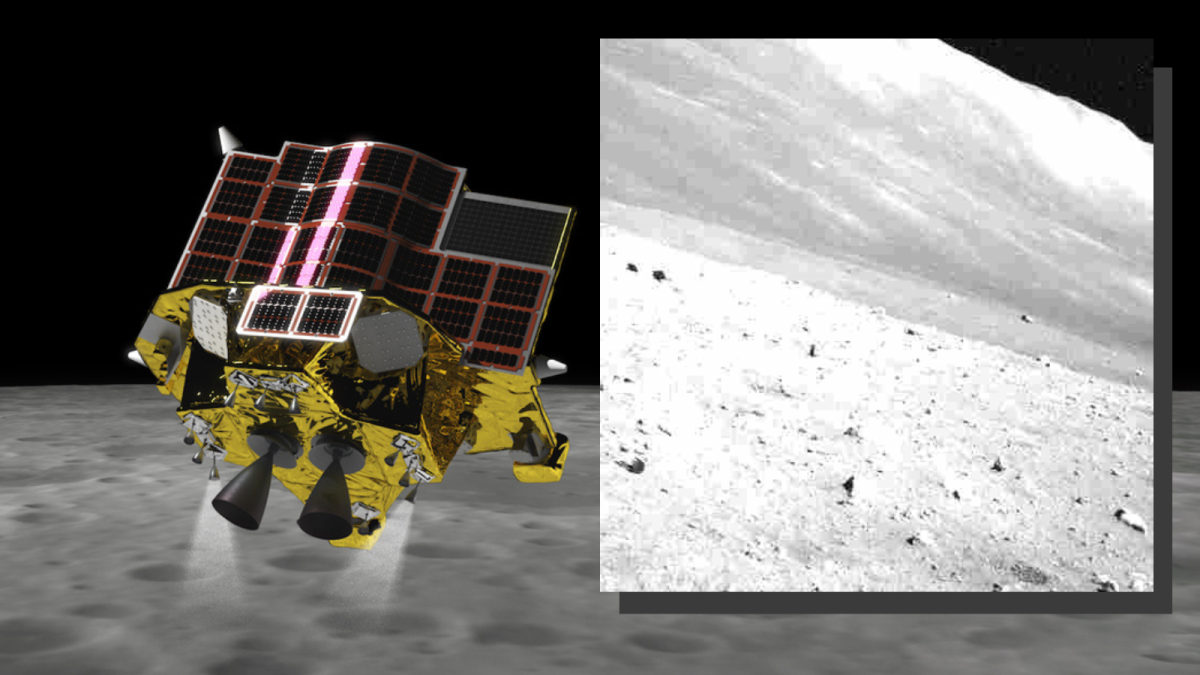The Smart Lander for Investigating Moon (SLIM) has survived its third night of a week on the moon.
This is despite the fact that Japan’s lunar lander was not designed to withstand even one blisteringly cold night on the moon, during which temperatures dropped to minus 274 degrees Fahrenheit (minus 170 degrees Celsius).
The Japan Aerospace Exploration Agency (JAXA) revealed that SLIM had braved its third lunar night on Wednesday (April 23) after receiving an image of the lunar surface from the lander.
Related: It’s alive! JAXA’s SLIM lunar lander sends home new photos after surviving the frigid moon night
Up X feed, JAXA shared an image captured by SLIM as it emerged from its third lunar night on the moon.
In the translated tweet, the Japanese space agency wrote: “Last night (the night of April 23) we were able to successfully communicate with #THINwhich had restarted, confirming that SLIM had survived for the third time.
“Here is a photo of the moon’s surface taken last night with the navigation camera. Because this photo was taken at the moon’s earliest age yet after the nighttime awakening, the moon is generally bright and the shadows are very short.”
SLIM arrived on the moon on January 19, 2024, tasked with testing landing technology and collecting data on lunar geology. Shortly after landing, JAXA operators discovered it had tilted forward and was resting on its nose. This meant that the energy-collecting solar panels were not properly pointed at the sun, making its survival even more remarkable.
SLIM’s first night on the moon began on January 31 and ended on February 15. Then night fell on SLIM again on February 29. The operators had expected a repeated temperature drop from about 212 degrees Fahrenheit (100 degrees Celsius) to about 274 degrees Fahrenheit (minus 170 degrees Celsius) spells doom for the lander.
“Although the chance of failure will increase due to repeated severe temperature cycles, SLIM plans to try again the next time the sun shines (end of March),” JAXA said in a update.
When operations were resumed in mid-March, JAXA found that the lander’s key functions were still operational. And that seems to be the case again when SLIM emerged from the lunar night again in mid-April and sent a message home on April 23.
While SLIM returned images of the moon’s surface, an independent researcher in India said Chandra Tungathurthi used the Chandrayaan-2 orbiter to check the Japanese lunar lander. He shared some of the photos he took on his X-feed.
Tungathurthi wrote: “I found SLIM using the high-resolution Orbital camera on board Chandrayaan-2. The photo below was taken on 2024-03-16 at a pixel resolution of 16 cm per pixel! Due to the low position of the In the sun you see long drawn shadows.”
RELATED STORIES:
— ‘We’ve proven that you can land wherever you want.’ Japan’s SLIM moon probe has achieved a precise moon landing, JAXA says
– Why Chandrayaan-3 landed near the moon’s south pole – and why everyone else wants to get there too
– Not dead yet: Japan is preparing for possible recovery of the SLIM lunar lander
“I shared three different views on the context of the location. I’ve talked a lot about the location where SLIM landed before, you can see them below #THIN woke up for the third time yesterday – that’s three nights in a row,” he continued.
“SLIM retained its primary functions even after three overnight stays, which was not anticipated in the design,” JAXA said in a translated message on X. “We will continue to closely monitor the condition of SLIM and hope to identify areas that are deteriorating depending on the moon’s day and night environment, as well as areas that are not prone to deterioration.”






